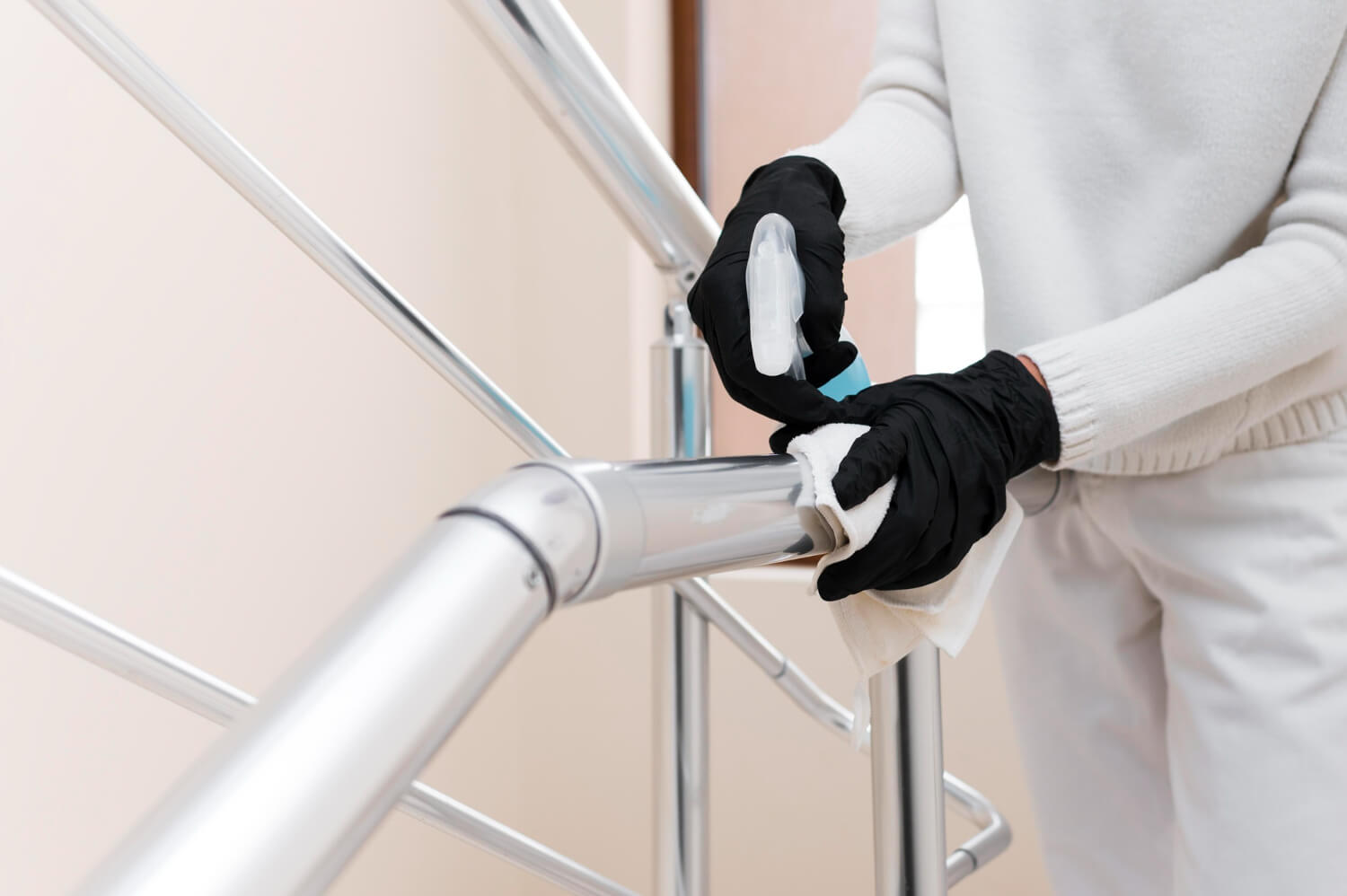Stainless steel is a popular material for kitchen appliances and other household items due to its sleek appearance, durability, and resistance to stains and rust. However, even stainless steel requires regular cleaning and maintenance to keep it looking its best. Here is a step-by-step guide on how to effectively clean stainless steel items in your home.
Table of Contents
Gather Your Supplies
Before you start cleaning, gather the following supplies:
- Microfiber cloths – These are lint-free and will not leave scratches on your stainless steel. Dedicate some cloths just for stainless steel cleaning.
- pH-neutral all-purpose cleaner or stainless steel cleaner – Avoid abrasive cleaners or anything too acidic or alkaline as this can damage the protective coating on stainless steel.
- Olive oil or baby oil – The oil will help restore shine and prevent streaks.
- Soft-bristle toothbrush – This is useful for cleaning in crevices or engraved patterns.
Wash With pH-neutral Cleaner
Mix a few drops of pH-neutral, non-abrasive cleaner (or dedicated stainless steel cleaner) with warm water. Dip a microfiber cloth in the solution and wring it out so it is just damp. Wipe down the entire surface of your stainless steel item using even, overlapping strokes. Take care to wipe with the grain of any brushed finish.
For best results, let the cleaner sit for 3-5 minutes before wiping away. This gives the ingredients time to break down any oil, grease or residue on the steel. Pay special attention to handles, edges and areas around knobs where grime tends to collect.
Remove Stubborn Stains
For stubborn fingerprints or grease stains, use a bit of undiluted cleaner applied directly to the spot with a damp microfiber cloth. Rub gently. You can also try rubbing the stain with a soft bristle toothbrush dipped in cleaner. Avoid scrubbing too aggressively as this can leave light scratches.
For mineral deposits from water, use a vinegar-water solution (1:1 ratio). Pour some on a cloth and rub onto the stained area. Rinse thoroughly with fresh water and dry well with a soft cloth.
Shine and Polish
Once your stainless steel is clean, it’s time to make it shine. Put a few drops of olive oil or baby oil on a clean microfiber cloth and rub it over the entire surface. This will help prevent streaking and leave a nice luminous finish.
Use a dry microfiber cloth to buff the steel and remove any excess oil. For an extra streak-free shine, consider using a dedicated stainless steel polish or spray at this stage. Apply sparingly according to product directions and buff with a clean, dry cloth.
Maintain Daily
Get into the habit of quickly wiping down your stainless steel items after each use. This will prevent build-up of dirt, grease and fingerprints that can be harder to remove if left for too long.
Use a different microfiber cloth just for daily maintenance wipes. Keep it dry or slightly dampened with water. Daily wiping also lets you inspect for any new scratches or damage so they can be addressed right away before getting worse.
Extra Tips
- Use lint-free microfiber cloths only. Paper towels or other cloths can leave tiny scratches. Rinse and wring cloths thoroughly before reusing.
- When wiping, rub gently and with the grain. Aggressive scouring or circular polishing motions can damage the brushed finish over time.
- Avoid bleach-based or abrasive alkaline cleaners as these will degrade stainless steel’s protective oxide layer.
- Immediately rinse and dry if any liquids like tomato sauce, lemon juice or vinegar spill onto stainless steel. Acidic foods can cause corrosion.
- Clean along any crevices and under rims where grime collects. Use a soft bristle brush if needed.
- For outdoor stainless steel kitchen surfaces, cover during construction to avoid damage from concrete or firebrick dust.
Keeping your stainless steel clean and polished not only makes it look great, but also helps maintain its protective chromium oxide layer to prevent corrosion. With the proper care and regular maintenance, your stainless steel items will stay in top condition for years to come.
Frequently Asked Questions
✓How can I make stainless steel stay fingerprint-proof?
Rubbing a tiny amount of olive oil over the surface will help minimize fingerprints and smudges. Be sure to remove any excess with a soft cloth so it’s just a micro-thin layer left behind. Using grain-embedded stainless steel also makes fingerprints less noticeable.
✓What’s the white residue on my stainless steel and how do I remove it?
Hard water can leave mineral deposits on stainless steel, causing a white/chalky residue. Clean with a vinegar-water solution using a soft cloth. One part vinegar diluted with one part water is ideal. Rinse and dry thoroughly after cleaning.
✓Why does my stainless steel have some rust spots?
Rust is caused by a breakdown of the protective chromium layer, often due to damage or use of harsh cleaners. Remove any surface rust with a rust remover made for stainless steel. Prevent future rust by cleaning regularly and avoiding abrasives.
✓Can I use baking soda to clean stainless steel?
Baking soda is mildly abrasive so it’s best avoided. It can also leave behind a residue. Instead, use a pH-balanced cleaner or mix your own solution of dish soap and water. For scrubbing power, add a bit of salt to the soapy water. Rinse thoroughly and dry well.
Affordable Cleaning and Gardening Services, a leading cleaning company based in Parramatta for over 20 years, has expert cleaners who can keep your stainless steel items looking pristine. Our friendly cleaners use effective and eco-friendly products to clean and polish stainless steel. Contact us today to learn more about our stainless steel cleaning services.






